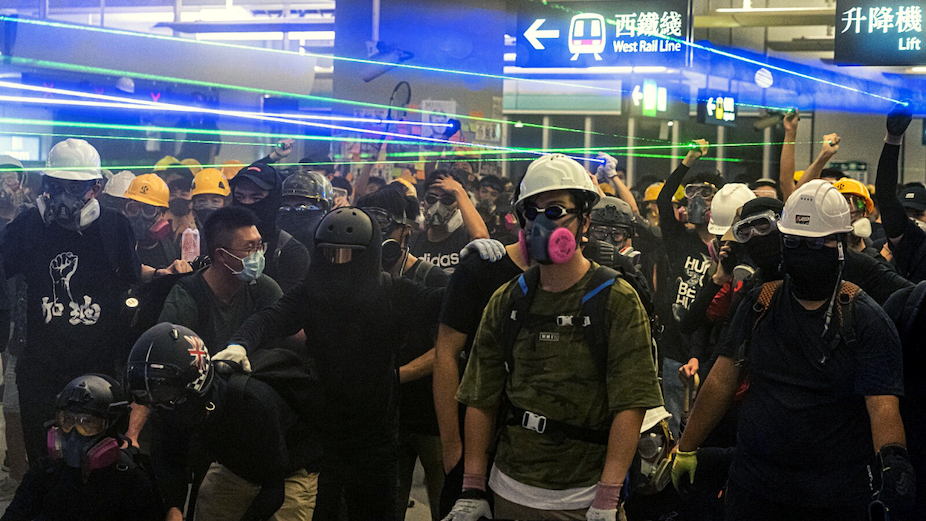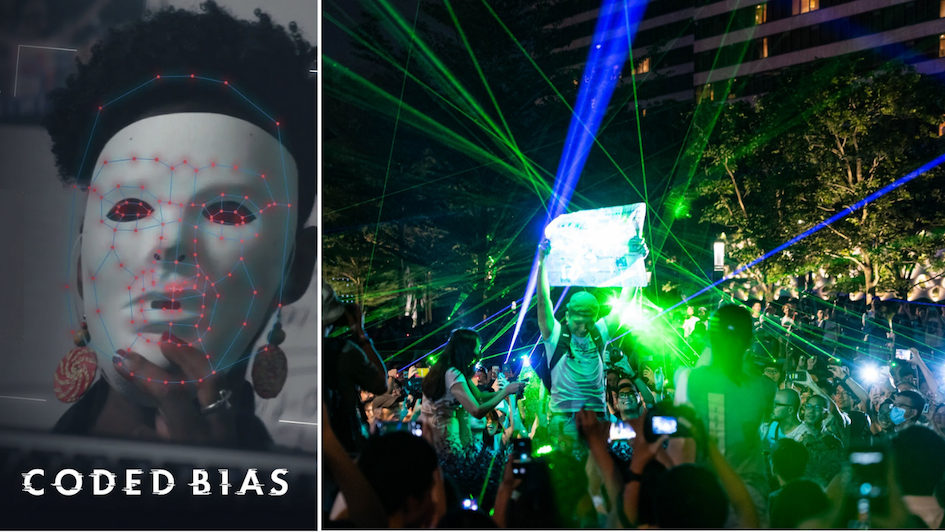A film exploring how digital surveillance crosses ethical lines and upholds existing power structures gave a special shout-out to Hong Kong protesters, who used tactics to evade authorities’ facial recognition tools during the 2019 demonstrations.
“Coded Bias,” a US documentary that premiered at the Sundance Film Festival last year, included news segments showing protesters beaming blue and green lasers at police officers—who are equipped with body cams—and spray-painting security cameras outside buildings.
Released on Netflix earlier this month, the film features research by Joy Buolamwini, an artificial intelligence expert at the Massachusetts Institute of Technology.
The documentary examines the inability of facial recognition to accurately see dark-skinned faces, and how algorithms perpetuate the race and gender bias in our daily lives.
In bringing these inequalities to light, “Coded Bias” looks at how different communities are fighting back against over-surveillance.
“I’ve been following what’s going on in Hong Kong and how police are using facial recognition technology to track protesters,” Buolamwini says in the film. “But also, how creatively people are pushing back.”
Over 10,000 people were arrested in connection with Hong Kong’s 2019 protests, aided by the city’s vast network of CCTV cameras in MTR stations, atop buildings and in other public places.
“When you see how facial recognition is being deployed in different parts of the world, it shows you potential futures,” Buolamwini, who also founded digital advocacy organization Algorithmic Justice League, adds.

In August 2019, Keith Fong, the then-leader of Baptist University’s student union, was arrested after officers saw him purchasing laser pointers in Mong Kok. Police said he was suspected of possessing “offensive weapons” and later released him. (But he was re-arrested last December, again for possessing the laser pointers and resisting the August 2019 arrest.)
The arrest prompted supporters of the movement to hold a “laser show” at the Space Museum in Tsim Sha Tsui, a gathering meant to ridicule the police’s claims that laser pointers pose a threat.
Radical demonstrators also smashed smart lampposts installed in Kwun Tong during the protests, wary that the installations are fitted with the types of surveillance tools used in mainland China.
The lampposts were set up by the government in the summer of 2019 as part of a three-year pilot scheme. In a 2020 statement, authorities reiterated that the lamp posts collect weather, air quality and traffic data, and that the cameras do not carry facial recognition functions.





Reader Interactions